Who watches the Watchmen? Rich Handley. More than you can imagine…
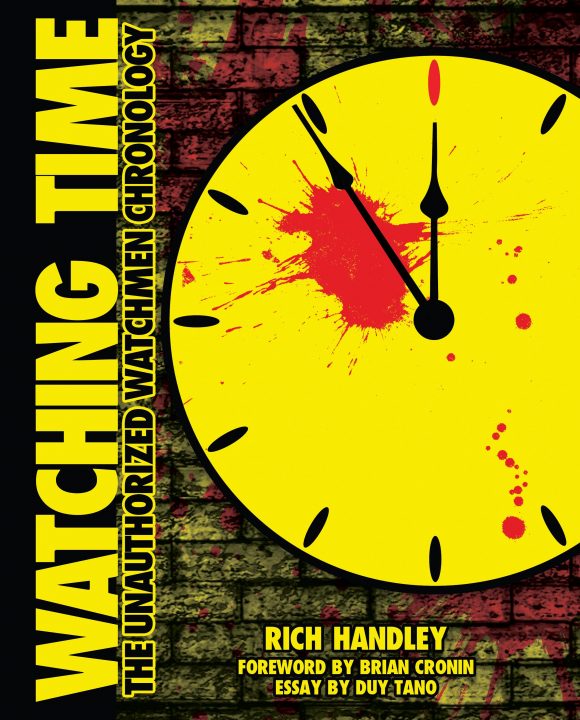
Rich Handley, Planet of the Apes and Star Trek expert extraordinaire (and occasional 13th Dimension contributor), is back with a new book: Watching Time: The Unauthorized Watchmen Chronology. It’s exactly as it sounds: A chronological look at Alan Moore and Dave Gibbons’ masterpiece that weaves in not just the main 12-issue classic but its various and sundry offshoots.
The project is, no pun intended, timely. With its Rebirth relaunch, DC Comics has made it abundantly clear that the regular DC Universe and the Watchmen Universe are on a collision course, with a showdown expected in about a year and a half. The clues have already been dropped — with more to come — most notably with Batman’s discovery of the Comedian’s blood-stained smiley-face button.
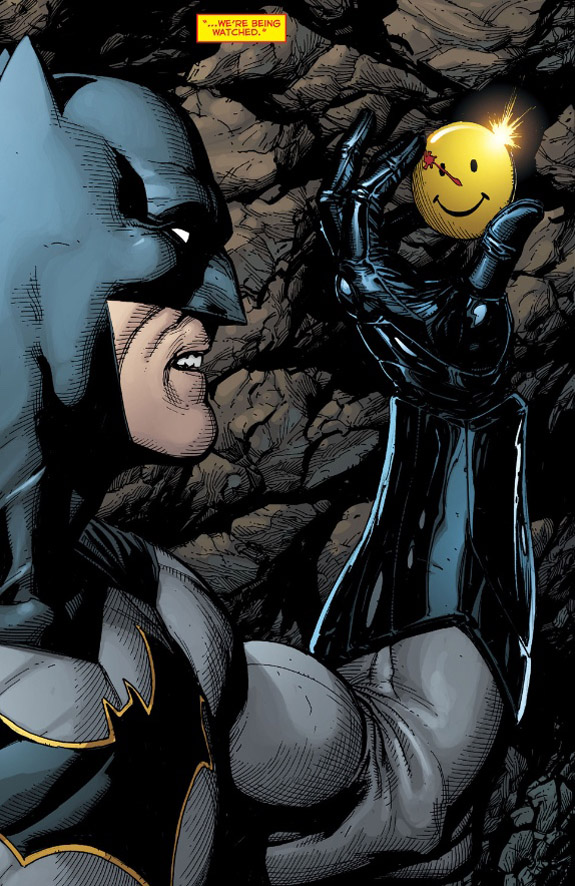
Gary Frank
So you can prep for that (or choose to ignore it) with Rich’s new book, which promises all sorts of illuminating info about everything that’s been published to date. (You can order it here.)
To whet your appetite, Rich is here with 13 THINGS YOU MIGHT NOT KNOW ABOUT WATCHMEN:
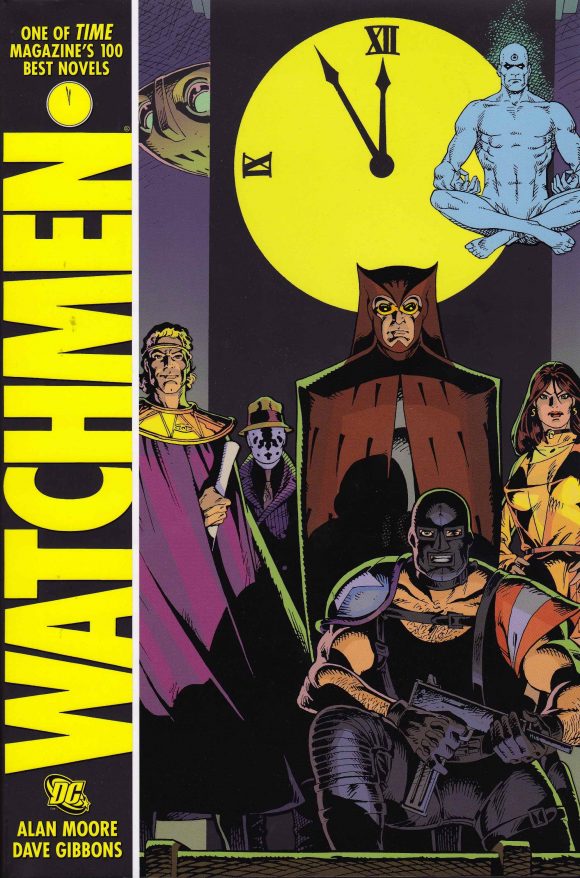
—
By RICH HANDLEY
How well do you know Alan Moore’s Watchmen and its various spinoff materials?
When rumblings arose in the mid-2000s of an impending Watchmen film, I revisited Moore’s graphic novel so it would be fresh in my head as I sat down to watch the story’s events playing out on the big screen. While I was at it, I researched whether anyone had used the Watchmen characters in other media, and discovered a trio of role-playing books published by Mayfair Games (Who Watches the Watchmen?, Taking Out the Trash—Curses and Tears, and The Watchmen Sourcebook), each of which incorporated the concepts and characters of Watchmen into the DC Heroes Role Playing Game.
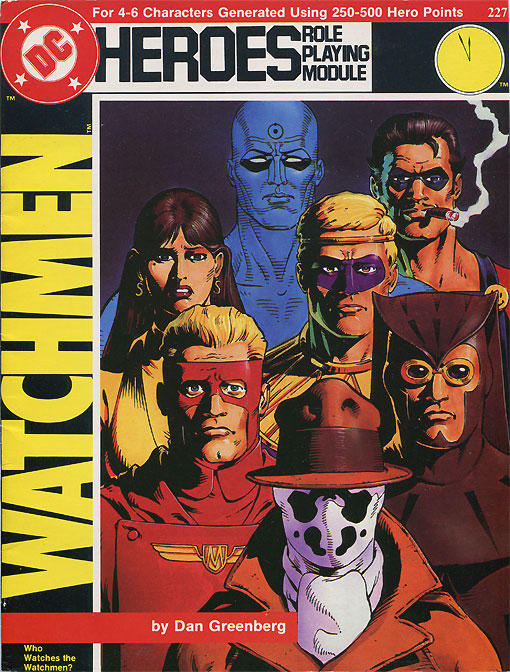
Set before the “present” of Moore’s saga, these books served as DC’s first Watchmen prequels. Despite some continuity gaffes (which is odd, since Moore co-wrote one of them), they offered a data dump of valuable information regarding the heroes’ and villains’ backstories, expanding the Watchmen world into something greater. As Nite Owl might say, they were a hoot—and so was Zack Snyder’s movie. To tie into that film’s release, Warner Bros. commissioned four video games utilizing the characters, but these, unfortunately, were less engaging than the RPG books, as they largely just featured the crime-fighters repetitively walking around the city, punching people.
Three years later, DC Comics announced a line of comics titled Before Watchmen. As divisive as the film was, these prequels were more so, as the idea of stories not written by Moore offended some fans, who deemed such a project disrespectful. I wasn’t among them—I found Before Watchmen enjoyable, particularly Minutemen, Silk Spectre and Moloch, which packed an emotional punch and more than a few laughs, as well as the exquisitely drawn Rorschach, which was exactly the sort of ass-kicking yarn one would expect the vigilante’s story to entail. A few of the others didn’t quite jibe with what Moore had laid down, and some character backgrounds ignored those created for the RPG books, but I think Before Watchmen deserves more respect than it tends to receive.
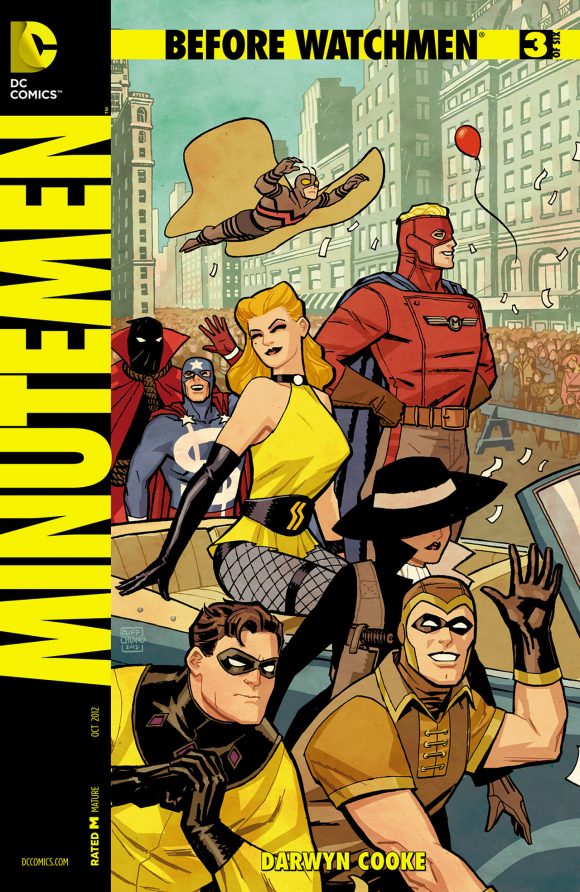
Cliff Chiang
Last year, I re-read Moore’s miniseries, Mayfair’s books, and all of Before Watchmen, and also watched play-through recordings of each video game. There were numerous instances in which the RPG books and Before Watchmen were incompatible, but by and large, these attempts at Watchmen prequels fit together surprisingly well. What’s more, in watching the play-through videos, I realized that their events mostly fit with the books and comics as well. Contradictions inevitably arose, but an intricately interconnected tapestry of Watchmen history nonetheless emerged.
I began making mental notes about how everything did or didn’t fit together. Six months later, those notes had grown into a 400-page manuscript. That book, Watching Time: The Unauthorized Watchmen Chronology, presented a detailed timeline covering all corners of the franchise, including not only Moore’s comics, the film, the RPG books, the video games and Before Watchmen, but viral videos, promotional newspapers, unproduced film scripts, and more. Along the way, I learned a lot about the Watchmen franchise and how it all fit together.
Here are 13 facts you might not know about Watchmen—one for each member of the franchise’s two superhero teams, the Minutemen and the Crimebusters—culled from Alan Moore’s work and its spinoffs.
—
Nelson Gardner (Captain Metropolis) was a sickly child who suffered from severe bronchial asthma attacks. His decision to enter the military, which would lead to his becoming a costumed adventurer, largely stemmed from his determination to move past the teasing and feelings of inadequacy he experienced during his youth.
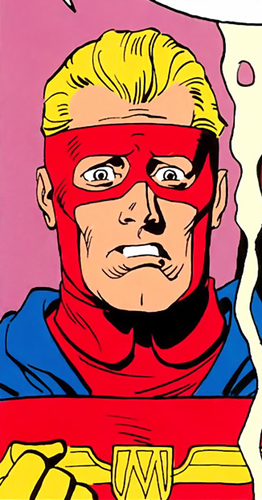
Gibbons
—
Ursula Zandt (the Silhouette) had a sister named Blanche who was murdered by a child molester known as The Friend of the Children, on the night that the two siblings were planning to escape the Nazi-controlled Austrian city of Linz. Zandt’s lifelong search for Blanche’s murderer was later cut short by her own death at the hands of another serial killer, Geoffrey Dean (a.k.a. the Liquidator).
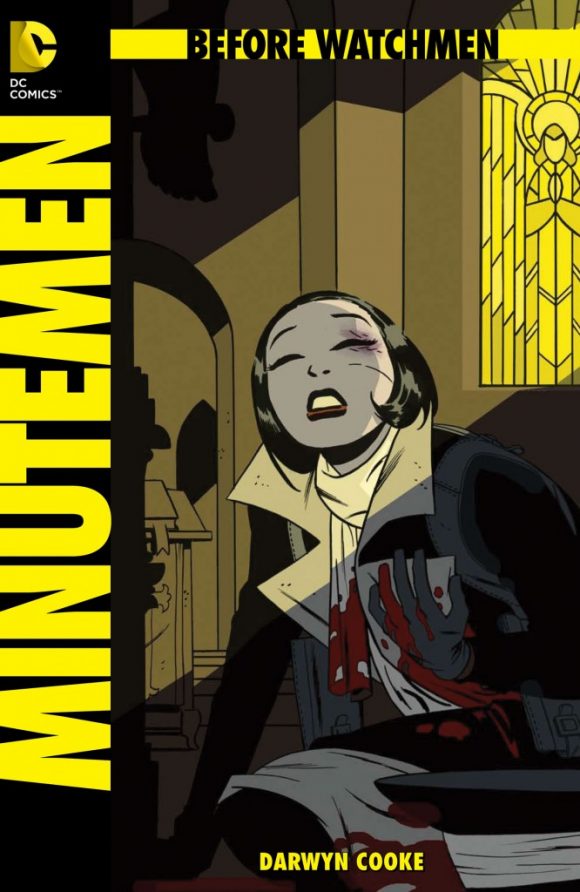
Darwyn Cooke
—
Conflicting accounts exist regarding where William Brady (Dollar Bill) grew up. Taking Out the Trash claims Kansas, while Before Watchmen: Dollar Bill indicates Nebraska. Oddly, The Watchmen Sourcebook also mentions Kansas, yet describes him as “an Omaha youngster,” thus making Taking Out the Trash and Before Watchmen simultaneously consistent and contradictory on the very same point.
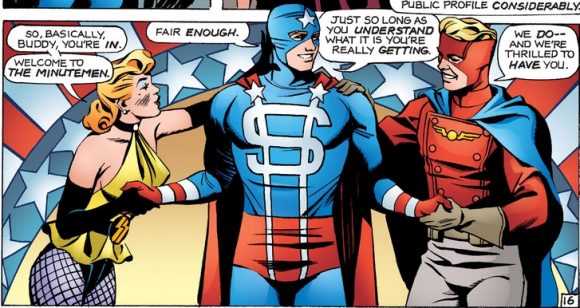
Steve Rude
—
Byron Lewis (Mothman) was highly sensitive to racial issues due to his relationship with his family’s butler, Frank Madison, a black man, who was more of a parent to him than his actual father. As a result, Lewis disliked the bigoted Nelson Gardner and once came to blows with him outside the Minutemen’s headquarters.
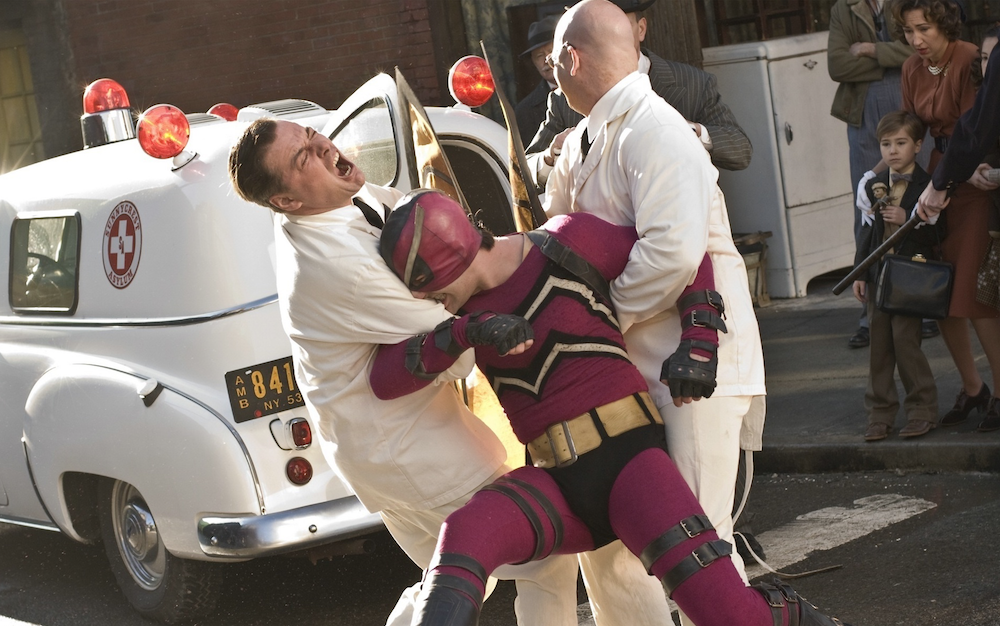
Niall Matter as Mothman, from the movie
—
Sally Jupiter, née Juspeczyk (the first Silk Spectre), became estranged from her parents after her sister Linda tragically died in a motor-vehicle accident shortly after getting married. Sally kept in touch with another sister, Bella, who never married but maintained a relationship with Sally’s daughter Laurie.
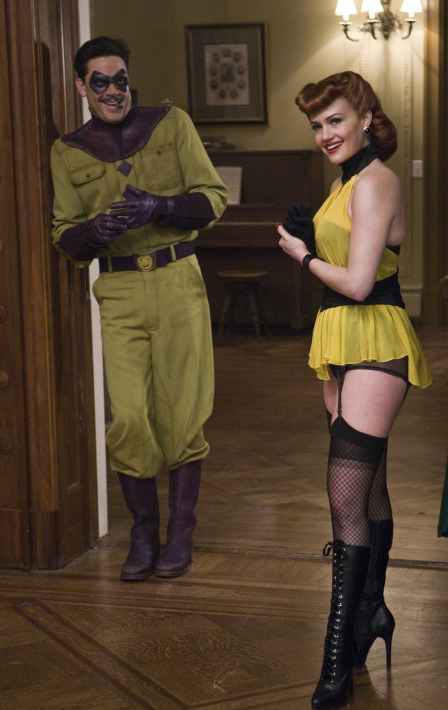
Jeffrey Dean Morgan and Carla Gugino, from the movie.
—
Hollis Mason (the first Nite Owl) was, at different times, in love with both Sally Jupiter and Ursula Zandt. Though the noblest of all Minutemen, he harbored a terrible secret that haunted him until his twilight years: Despite his having hinted, in his autobiography Under the Hood, that the Comedian murdered Hooded Justice, it was actually Mason who had done the deed, due to his mistaking Hooded Justice for serial killer Rolf Müller.
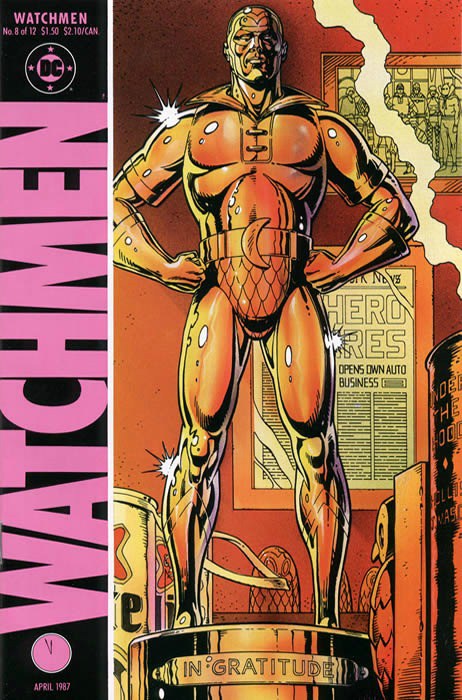
Gibbons
—
Eddie Blake (the Comedian), unlike most of his fellow crime-fighters, has had no family members named in any ancillary sources. However, a prop replica of his guns, released as a tie-in to the Watchmen film, also contained his military dog tags, inscribed with the name Kate Blake. Since dog tags traditionally list a soldier’s next of kin, and since it’s doubtful Blake ever married, Kate could have been his mother or sister.

Gibbons
—
Rolf Müller, though strongly hinted as being Hooded Justice in Under the Hood, was not the crime-fighter’s true identity. Instead, the circus strongman was actually the child molester The Friend of the Children, while Hooded Justice was one of his victims, a German youth named Jacob. The memory of Müller’s abuse caused Jacob nightmares on into adulthood, and he designed his Hooded Justice costume to mirror Müller’s garb.
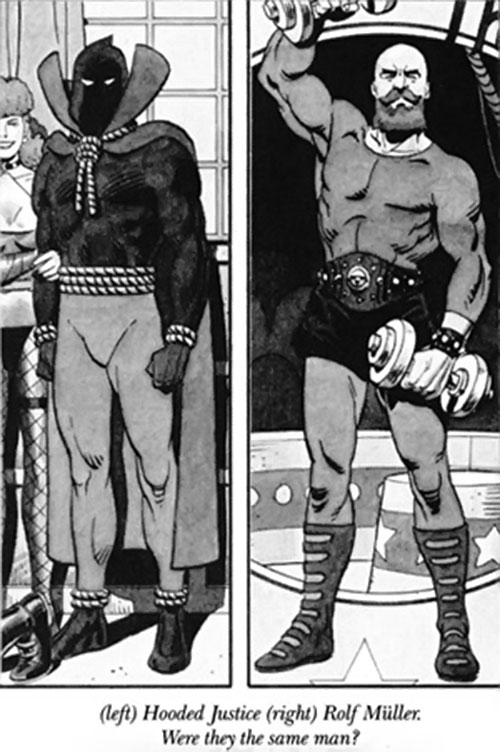
Gibbons
—
Jon Osterman (Doctor Manhattan) almost died as a child at the barrel end of Nazi guns, but his mother sacrificed herself to draw the soldiers’ attention away from her husband and son. Jon watched as his mother died in his father’s arms, then the two escaped to the United States. Determined to give his son a good life, the elder Osterman took a job as a watchmaker.
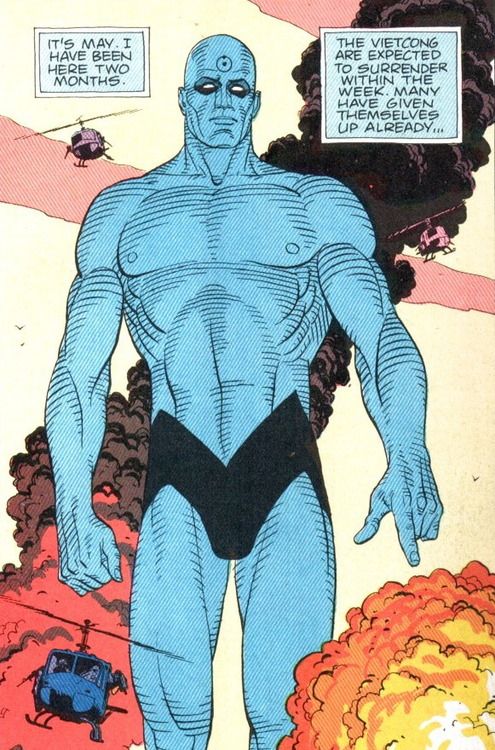
Gibbons
—
Walter Kovacs (Rorschach) made his first kill at age 11, after overhearing his mother’s abusive ex-lover plotting to kill him and make it look like an accident. Walter tied string at the top of a staircase, causing the man to fall to his death. He would never know that this man may have, in fact, been his own father, Charlie.
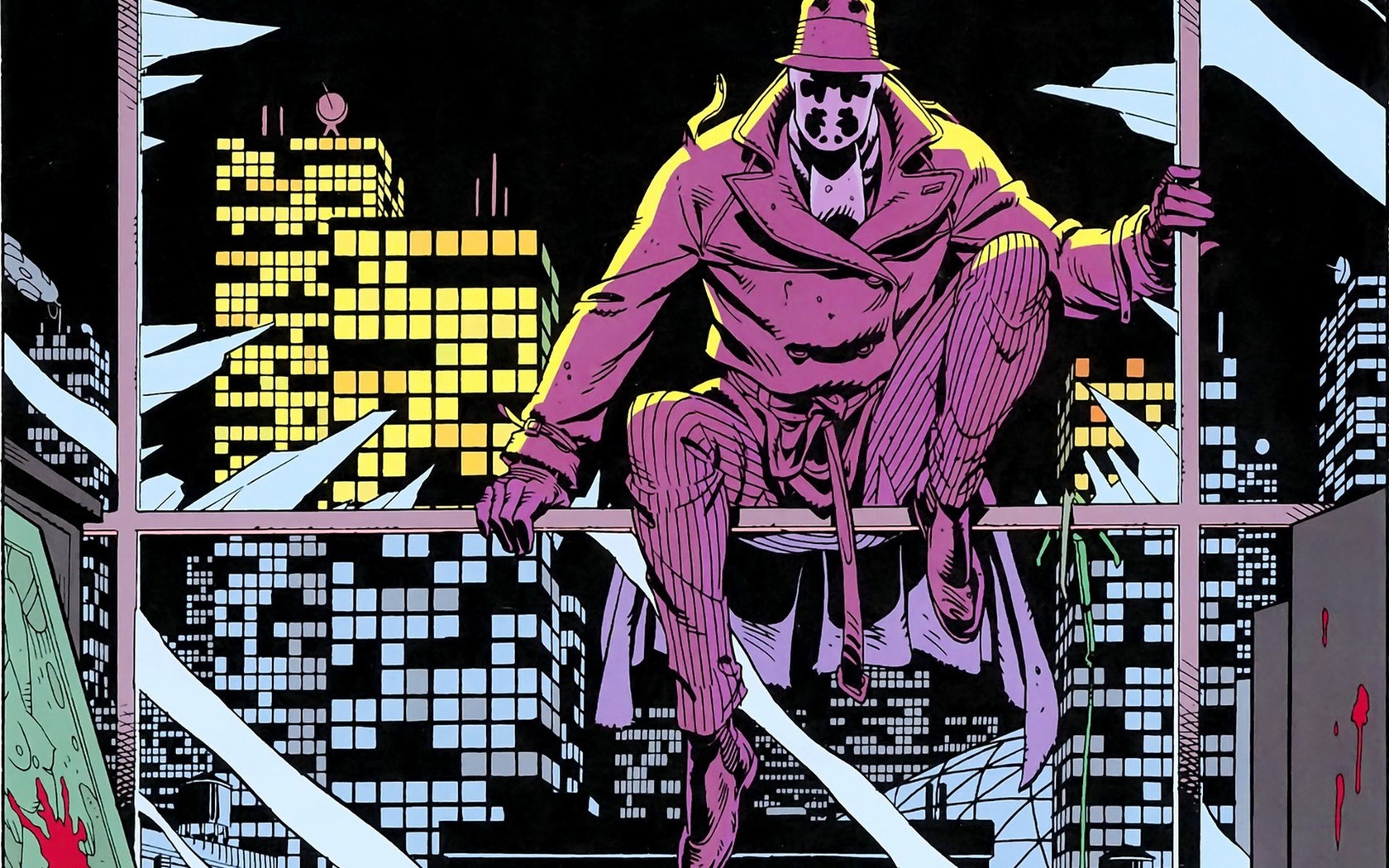
Gibbons
—
Dan Dreiberg (the second Nite Owl) may well have been Rolf Müller’s first cousin. Dan’s uncle Alan married a woman named Greta eight years after Rolf’s father, Henrik Müller, abandoned him and his mother, also named Greta. Alan Dreiberg thus could have been Greta Müller’s second husband—but since Rolf ran away from home as a child, neither he nor Dan would ever have known of this possible relationship.
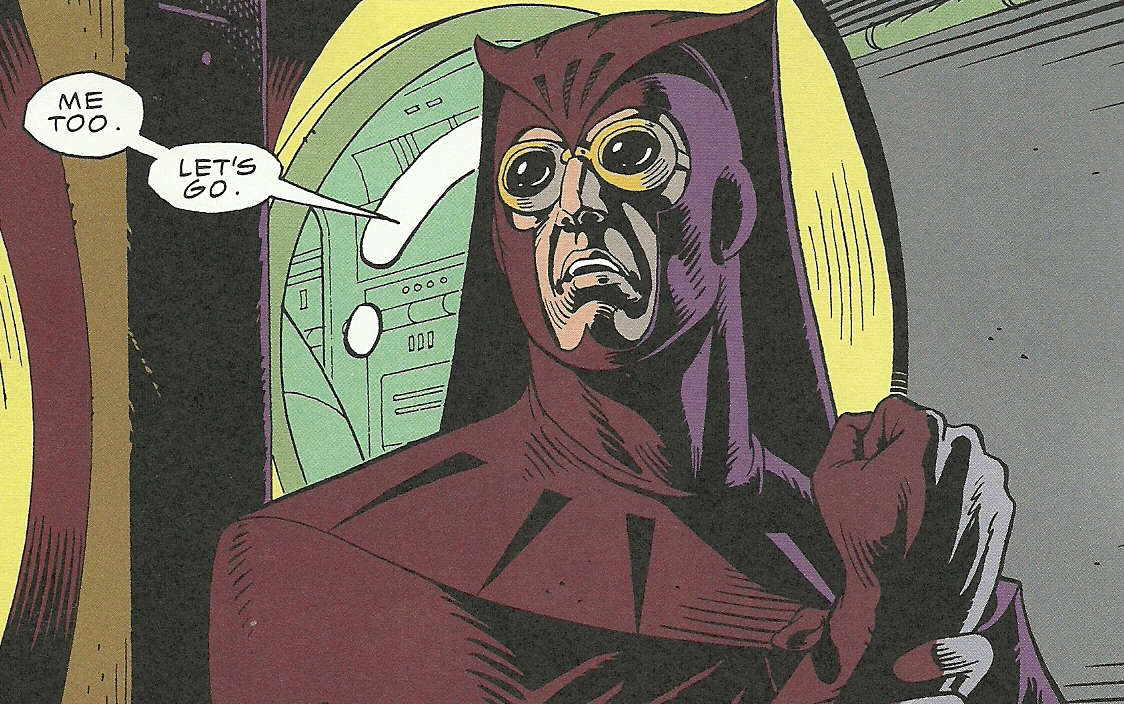
Gibbons
—
Laurie Juspeczyk, née Jupiter (the second Silk Spectre), killed Frank Sinatra when she was a teenager, when the latter was secretly a criminal mastermind called the Chairman. After Laurie jammed a boot heel into Sinatra’s neck, he ran out in front of a bus carrying Ken Kesey and several hippies, and died instantly.

Amanda Conner. Note from Dan: The Silk Spectre series from Conner and Darwyn Cooke was outstanding.
—
Adrian Veidt (Ozymandias), according to Alan Moore’s original notes (reprinted in the book Absolute Watchmen), lived to be 150 years old, no doubt due to Adrian’s own brilliant advances in medical sciences. Since Veidt was born in 1939, this means he did not die until the year 2089.

Gibbons
Regardless of how well you may know Alan Moore’s Watchmen and its various spinoffs, chances are some of the above was new to you. That’s one of the most exciting aspects of fandom, though: No matter how immersed one is in a particular franchise, there’s always more to discover… always more to watch, man.
—
Rich Handley is the editor of Hasslein Books (hassleinbooks.com) and the author of Watching Time: The Unauthorized Watchmen Chronology. He has written or co-written several other books as well, including Planet of the Apes: Tales from the Forbidden Zone (coming next year from Titan Books), Timeline of the Planet of the Apes, Lexicon of the Planet of the Apes, Back in Time: The Back to the Future Chronology, A Matter of Time: The Back to the Future Lexicon and numerous essay anthologies for Sequart, discussing the Planet of the Apes, Star Wars, Star Trek and Blade Runner franchises. He has also contributed to ATB’s Outside In Boldly Goes and IDW’s five Star Trek comic-strip reprint hardcover books.

Trackbacks/Pingbacks